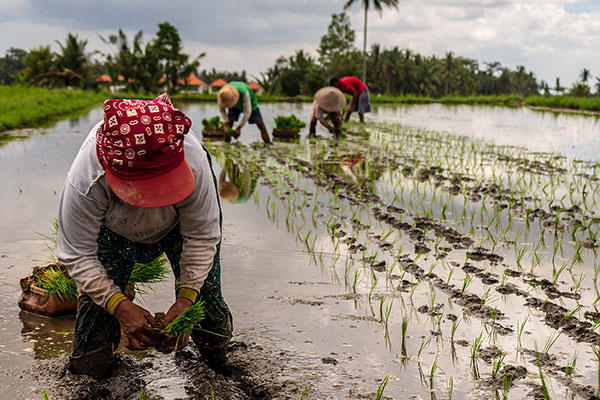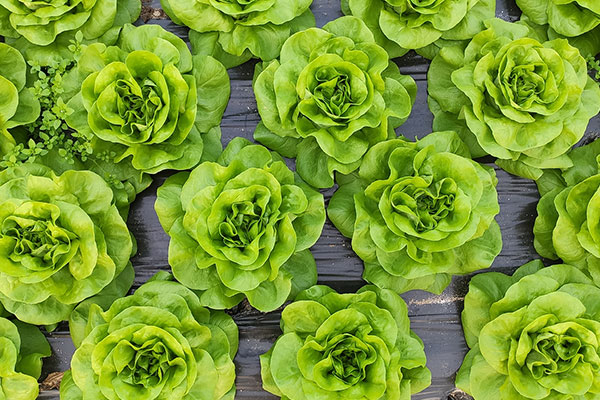Arifah Yeob
As of 2017, 55% of the world’s population lives in urban areas, with an expected increase to 66% by 2050. With this projected growth, each nation will face numerous challenges in meeting the needs of the growing urban populations, including housing, infrastructure, energy, water, employment and food security.If cities are so dense and overpopulated, why don’t we move to rural areas instead? The main case for high density is the efficiency that it brings, through cheaper public transportation infrastructure and concentrated electricity, water and sanitation services. It is also less environmentally damaging to provide these services compared to a dispersed rural sprawl.
However, food security is still an issue, particularly fresh produce. Due to the lack of land in urban areas, mass-scale farms are located in agricultural zoning areas outside of the cities.
Like how a dense city is made for efficiency, these mass farms are also designed to maximise the output of the produce, sometimes at the expense of quality. Logistics and supply chains are then required to move this produce around. Our vegetables and poultry are typically sourced from more than 200km away from where we live. Walk in the green aisle of your supermarket and you can see many of our produce is imported from China and India.

Workers on a farm in Ubud, Indonesia work the land.
But what happens when the supply chains break? In October last year, there was a major crisis where Malaysians were faced with an onion shortage as India put a ban on their onion exports due to extended monsoon downpours which delayed harvest. This caused onion prices to shoot up from twice their normal rates.
More recently, during the COVID-19 Movement Control Order (MCO), local Malaysian farmers have had to dump tonnes of produces due to logistics problems.
Historically, the concept of urban farming comes from this very issue. Community gardening was a response to food shortages during World War I and II, where British and the United States governments allocated plots of community land to their citizens to cultivate. Over the years, these community gardens have evolved into urban farms, with transactional activities involved.
But are urban farms and community gardens the solution to the issue of food security for the world’s ever-growing population now? The direct answer is no. Up to 2019, urban farms only met up to 10% of the needs of the population.
If growing food in our backyards, roofs and balconies are not contributing to solving the food security problem, what are the benefits of doing so then?
Firstly, the realistic hope of an urban farm or garden is that this locally grown produce will provide an additional source of healthy greens and fruits to the direct people who are engaged in the activities.
Environmentally speaking, these plots of greens either stacked high in hydroponic containers or planted on window sills can help filter out local air pollution and cool down the overall temperature of the city. Minimising the distance of food travel also reduces the carbon footprint created by the supply chain. As such, there are modest but valuable improvements to the sustainability of our food.

Have you ever looked at your produce and wondered what it takes to grow your what’s sitting on your plate?
Sociologically, community gardens or community farms increase social bonds and networks among neighbours and the people who participate in farming. Community gardens point the way to living sustainably in an urban environment and encourage waste minimisation, composting and water usage techniques that can be used by people in their own homes. The act of sharing the produce is also a great way to bring people together. During the MCO, local communities of Malaysians are sharing their produce with their neighbours simply by hanging them on their fences.
The biggest benefit of it all is people’s reconnection to the soil – the satisfaction of growing your own food and knowing where the food comes from. Watching a tomato grows gives you a better appreciation of life and also of the farmers who produce it.
So what can you do as an individual? Just simply start to plant your own seedlings from your produce discards. Onions, garlic and chilies are the easiest to start with, even if you live in an apartment without a balcony. There are numerous videos online and on social media that show you how to do this.
Walk around your neighbourhood, find a local community garden and start buying produce from your urban farms. If you are lucky enough to have a plot of land in your yard, it’s time to get out your overalls and start planting! We might not solve the food security single-handedly, but a combination of all of these steps are a great way to conserve our environment, live sustainably and improve our health.

